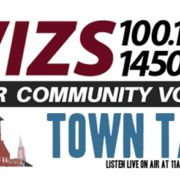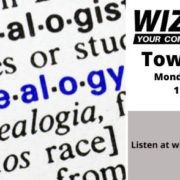TownTalk: Geneaology Basics, Pt. 2
There is so much information at our fingertips in the 21st century world of genealogy, but people who want to learn more about their ancestors still have to use those tried-and-true research to obtain the most accurate results.
Bill Harris and Mark Pace, North Carolina Room Specialist at Oxford’s Thornton Library discussed different types of records, from family Bibles to courthouse files in Thursday’s tri-weekly history segment of TownTalk.
Before the days of online subscriptions that help individuals fill in family tree information, genealogists had to go to the source; oftentimes, that was the local courthouse.
“The court was all powerful back in the day,” Pace said, adding that you can find “all sorts of crazy records,” from the usual wills and deeds, to the bounty that someone was paid for bringing in a wolf hide.
Court records are considered “primary sources,” Pace said, as are family Bibles, tombstones and church records.
“Secondary sources are a little trickier to document,” he continued. A secondary source may be something like a newspaper article or obituary and books on local history, all of which technically contain second-hand information.
Of course, there are many books that chronicle the history of a place or a family that are considered very reliable and upon which many genealogists rely for information.
Pace said in his 40-plus years of researching history of some sort or another, he said it’s always gratifying to find that bit of missing information that had previously eluded him.
“You’ll hear a ‘whoopee’ in a quiet library,” he said, and it’s a sure sign that another researcher has found an elusive tidbit as well. “They’ve found what they’re looking for,” he said. “It‘s very rewarding.”
CLICK PLAY!



